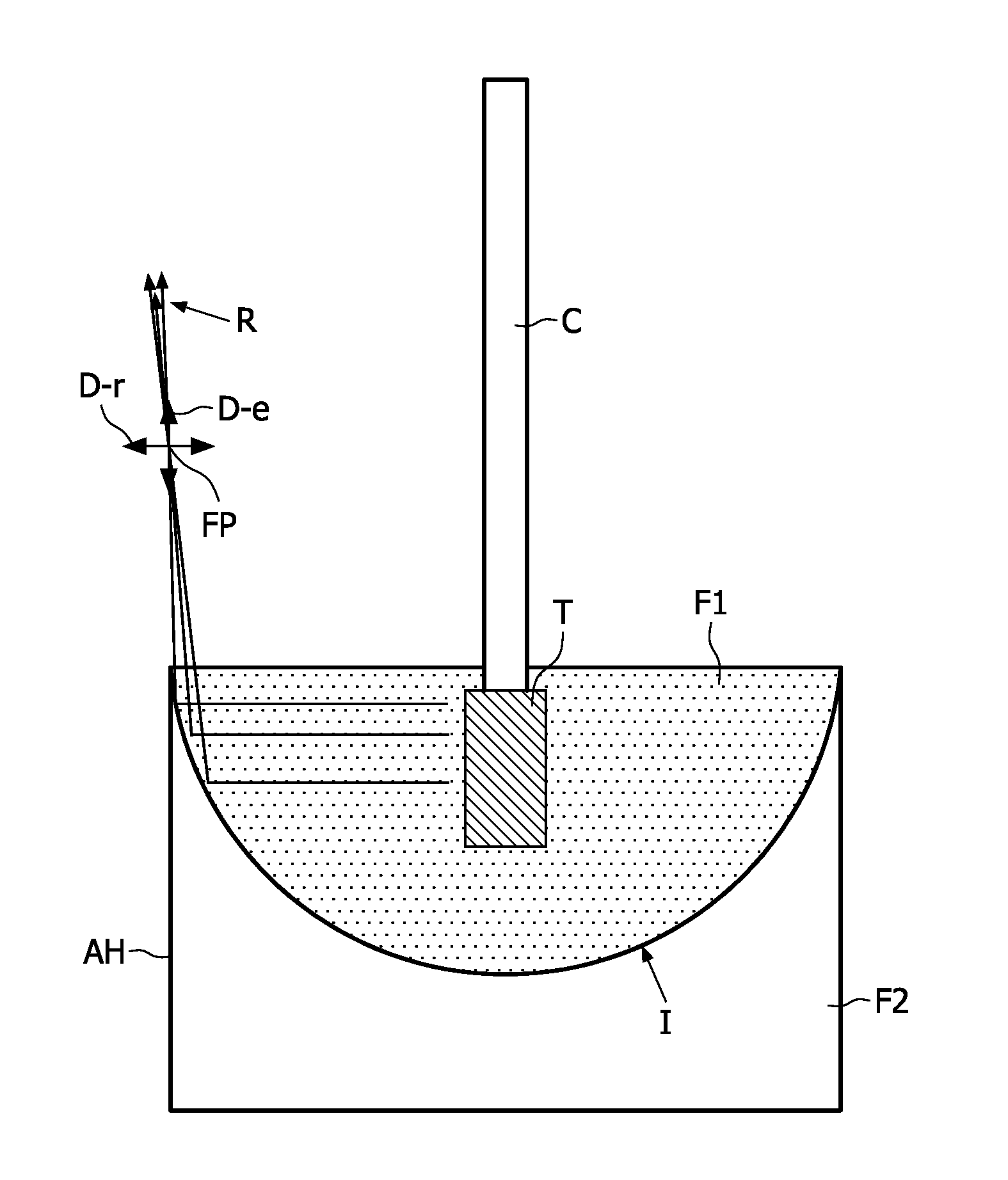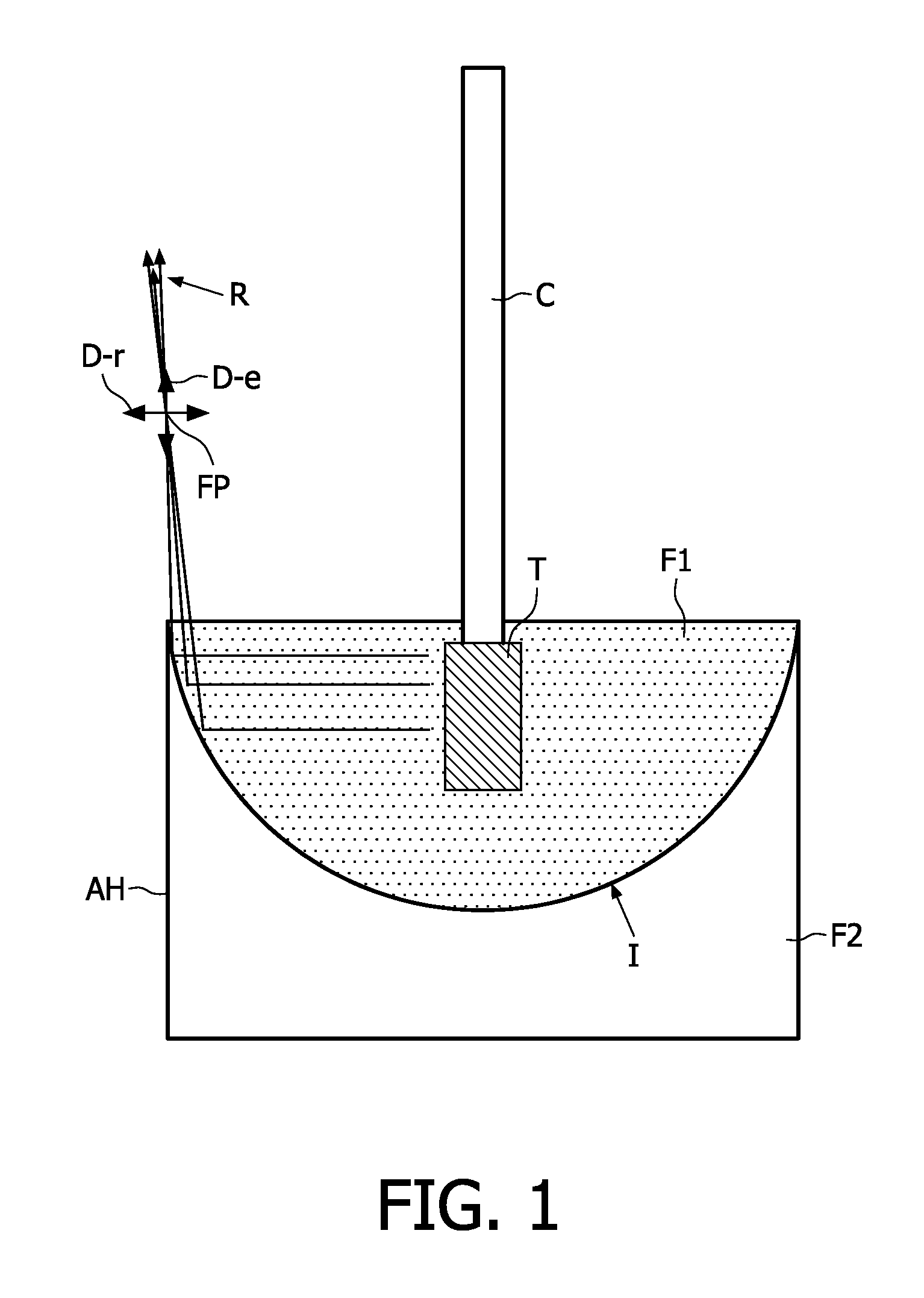Ultrasonic assembly with adjustable fluid lens
a technology of ultrasonic equipment and fluid lens, which is applied in the field of ultrasonic equipment, can solve the problems of reducing the conductive efficiency of tissue, requiring separate catheters and fixed inflatable balloons, and complicating therapy planning, etc., and achieves the effect of simple and economic us
- Summary
- Abstract
- Description
- Claims
- Application Information
AI Technical Summary
Benefits of technology
Problems solved by technology
Method used
Image
Examples
Embodiment Construction
[0041]FIGS. 1 and 2 illustrate basic parts of a rather simple ultrasonic assembly embodiment such as for use in medical treatment, e.g. for insertion into human pulmonary veins. FIG. 1 illustrates a side view, while FIG. 2 illustrate a top view (to the left) seen from the catheter C side, and a side view illustrating a voltage source VS connected to control the single fluid focus lens in this embodiment.
[0042]In FIG. 1 the ultrasonic assembly embodiment is mounted on a catheter C such as for use in medical treatment. Electrical connections to the transducer and control signal(s) to control the fluid focus lens can be applied from outside via wires inside the catheter C. In the illustrated embodiment, the fluid focus lens formed by a first fluid F1 and a second fluid F2 arranged with an interface I between, has a shape being rotational symmetric around an axis formed by the extension of the catheter C. From FIG. 2 this is seen in the sketch to the left as a circular top section view ...
PUM
 Login to View More
Login to View More Abstract
Description
Claims
Application Information
 Login to View More
Login to View More - R&D
- Intellectual Property
- Life Sciences
- Materials
- Tech Scout
- Unparalleled Data Quality
- Higher Quality Content
- 60% Fewer Hallucinations
Browse by: Latest US Patents, China's latest patents, Technical Efficacy Thesaurus, Application Domain, Technology Topic, Popular Technical Reports.
© 2025 PatSnap. All rights reserved.Legal|Privacy policy|Modern Slavery Act Transparency Statement|Sitemap|About US| Contact US: help@patsnap.com



